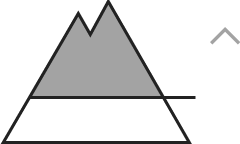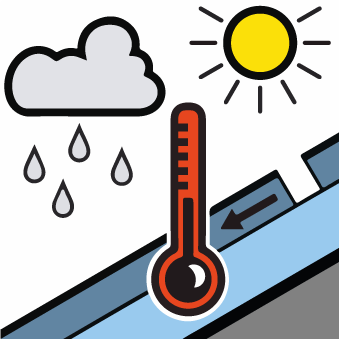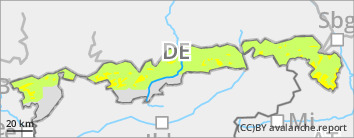
Danger level
 | 2000m |
|  |
|  | ||||
|  |  |

Spontaneous releases to be expected in the sun.
Avalanche danger above 2000 m is considerable; below that altitude it is moderate. Main problem: snowdrift accumulations which can be triggered as medium-sized slab avalanches even by minimal additional loading in many places. Avalanche prone locations are found on steep slopes adjacent to and distant from ridgelines in W/N/SE aspects as well as in wind-loaded gullies and bowls. Frequency and size increase with ascending altitude. In extremely steep sun-exposed terrain small to medium-sized glide-snow avalanches can trigger naturally. Isolated medium-sized glide-snow avalanches can trigger naturally on very steep slopes with smooth ground.
Snowpack
During Wednesday night, southerly and westerly winds will generate fresh snowdrift accumulations. Thin intermediate layers that are prone to triggering are embedded in both fresh and somewhat older snowdrift masses. Weak layers consisting of faceted crystals also exist at the transition from the fresh snow from Tuesday and old snowpack surface, partly also around melt-freeze crusts. Such weak layers vary depending on aspect and altitude. As a consequence of solar radiation and mild temperatures the snowpack surface is becoming moist and forfeits its firmness. In south-facing terrain at intermediate altitude the snow was deposited atop warm and partly wet ground which enables gliding movements of the snowpack.
Tendency
Snowdrifts will slowly become less of an issue; weak layers in the old snowpack will become more relevant.




